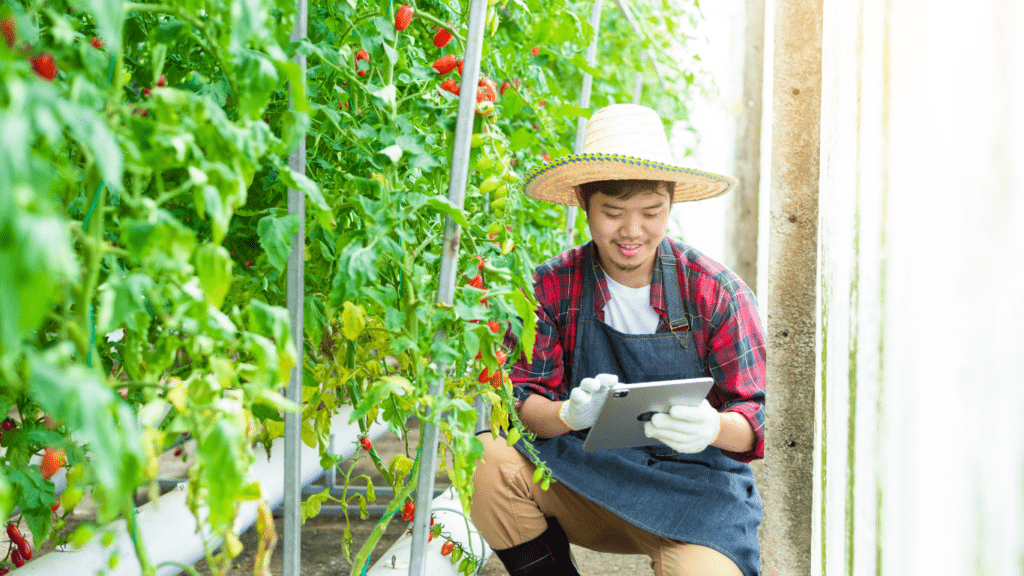The Evolution of Consumer Preferences
Consumer preferences have shifted significantly in the last decade. Prioritizing sustainability and health, shoppers now seek eco-friendly options. Emphasis on ethical production methods has risen, pushing demand for fair trade and humane treatment certificates.
Health-conscious shoppers are driving the surge in organic produce. They prefer foods free from GMOs, pesticides, and synthetic fertilizers, which has expanded the organic farming sector by 12% annually from 2010 to 2020 according to the USDA.
Plant-based proteins are becoming mainstream. To meet this demand, producers have developed innovative alternatives like pea protein and mycoprotein. Sales of meat substitutes grew by 27% in 2020, per the Plant Based Foods Association.
Technological advancements enable traceability. Consumers now want to know the origin of their food. Blockchain and QR codes provide transparency, ensuring products meet ethical standards.
Farmers are adopting sustainable practices. Crop rotation, cover cropping, and reduced chemical usage are more common, responding to eco-conscious consumers. According to the FAO, sustainable practices are now employed on nearly 25% of global farmlands.
These evolving preferences shape the agricultural market. Producers must adapt to stay relevant, proving that consumer choice drives industry change.
Impact on Crop Choices
Consumer preferences are significantly influencing the types of crops farmers cultivate. This shift showcases the agricultural market’s responsiveness to evolving demands for healthier and more ethical food options.
Trends in Organic Produce
Farmers are increasingly prioritizing organic crops, driven by consumer demand. Organic produce has grown substantially, with sales increasing by 12% annually from 2010 to 2020.
Consumers seek products free from synthetic pesticides and fertilizers, prompting farmers to adopt organic farming methods like crop rotation and natural pest control. For instance, organic apples and carrots have seen notable growth due to their perceived health benefits and lower environmental impact.
Rise of Non-GMO Requests
The push for non-GMO crops is another key trend, fueled by concerns about genetic modification and its potential health impacts. According to the Non-GMO Project, over 1,400 brands now feature non-GMO labels, indicating consumer preference.
Farmers must source conventional seeds and adhere to specific guidelines to meet this demand. Examples include non-GMO corn and soybeans, which cater to consumers avoiding genetically modified organisms in their diet. This trend emphasizes transparency and natural food sources.
Influence on Livestock Farming
Consumer preferences shape livestock farming by driving demand for ethical, sustainable, and health-focused products.
Demand for Free-Range Products
Free-range livestock products like eggs, poultry, and meat see an upward trend. Shoppers seek humane treatment certifications such as Certified Humane and Animal Welfare Approved.
These certifications assure animals have outdoor access, space to roam, and natural living conditions. In 2019, free-range egg sales rose by 15%, reflecting consumer interest in humane animal practices. Retailers respond by increasing shelf space for free-range goods, amplifying this trend further.
Increase in Plant-Based Alternatives
Plant-based alternatives challenge traditional livestock farming by reducing meat consumption. Products like soy-based burgers and almond milk appeal to health-conscious and environmentally aware consumers. From 2018 to 2021, the plant-based meat market grew by 27%, as reported by the Good Food Institute.
This shift influences farmers to diversify by incorporating plant-based protein crops such as peas and soybeans. Tech advancements in this sector lead to improved taste and texture, making these products viable options for mainstream consumers.
Technology and Innovation

Advances in technology and innovation are fundamentally transforming agriculture. Enhanced tools and methods empower farmers to meet evolving consumer demands more efficiently.
Precision Agriculture
Precision agriculture employs modern technologies to optimize field-level management. GPS and drones provide accurate data on soil conditions, crop health, and weather patterns.
Farmers use this data to apply water, fertilizers, and pesticides more precisely. As a result, they improve yields, reduce waste, and minimize environmental impact.
Supply Chain Transparency
Technological advancements have made supply chains more transparent. Blockchain and QR codes offer consumers detailed information about product origins and production methods.
I see this in consumers scanning QR codes to track produce from farms to stores. Blockchain ensures data integrity, preventing tampering and enhancing trust among buyers. These innovations cater to the demand for transparency and accountability in food production.
Case Studies
The influence of consumer preferences on agriculture markets is evident through various real-world examples. Here’s how different farms and businesses have adapted or faced challenges in this evolving landscape.
Successful Market Adaptations
Farms embracing sustainable practices witness positive outcomes. For instance, ABC Organic Farm shifted to organic farming, resulting in a 30% increase in sales over 2 years. They emphasized crop rotation and reduced chemical usage, aligning with eco-conscious consumer demands.
XYZ Plant Farm introduced a variety of plant-based proteins. Their focus on pea protein led to a 20% market share within a year. Consumers’ rising interest in health-conscious products significantly contributed to their success.
LMN Dairy Farm adopted blockchain technology to enhance traceability. By implementing QR codes on their products, they provided transparency about production methods. This move increased consumer trust and boosted sales by 15%.
Lessons from Challenged Farms
Some farms struggle to adapt.
- DEF Meat Farm focused solely on traditional livestock farming. As demand for plant-based alternatives grew, their market share declined by 25%.
- GHI Vegetable Farm ignored consumer preferences for organic produce. Their reliance on non-GMO crops without switching to organic methods led to a 10% drop in sales. This example highlights the importance of aligning with health trends in agriculture.
- JKL Grain Farm faced difficulties due to outdated practices. Their resistance to adopting precision agriculture tools like GPS and drones hindered their productivity and environmental sustainability. Consequently, they experienced a 5% decrease in yields.
These case studies illustrate how consumer preferences shape agriculture markets, underscoring the necessity for farms to adapt to remain competitive and meet evolving demands.
Future Outlook
Consumer preferences continue to reshape the landscape of agriculture markets. Emerging trends and strategies will further define the future.
Predictions for Upcoming Trends
Several key trends are emerging in agriculture due to evolving consumer preferences. Sustainable farming practices will gain more traction as consumers demand eco-friendly products.
Use of organic inputs and regenerative agriculture is expected to rise. Technological advancements will improve traceability and transparency within the supply chain. Blockchain, AI, and machine learning are likely to integrate deeper into farming methods.
Plant-based proteins will see a surge as health and environmental considerations become pivotal. Alternative meat products, like lab-grown meats, may experience increased consumer acceptance.
Demand for locally sourced produce will continue to grow, driven by consumers’ desire to support local economies and reduce carbon footprints. Personalized nutrition, tailored to individual health needs, will emerge as a major trend, impacting crop choices and farm management.
Strategies for Farmers and Producers
Farmers and producers must adopt specific strategies to align with these emerging trends. Embracing technology is crucial; investing in blockchain and AI can enhance traceability and supply chain efficiency. Implementing sustainable practices, such as:
- crop rotation
- organic farming
- reduced chemical usage
is essential to meet eco-conscious consumer demands.
Developing product lines that cater to the growing market for plant-based proteins and alternative meats can diversify income streams. Focusing on local markets and establishing direct-to-consumer channels can increase profitability and build consumer trust.
Utilizing precision agriculture tools can optimize field management and resource usage, reducing costs while increasing yields.
Farmers should stay informed about consumer trends through market research. Engaging with consumers via digital platforms can provide insights into preferences and demands, enabling better alignment with market expectations.
Collaborating with certification bodies for fair trade and humane treatment can further enhance product appeal.



